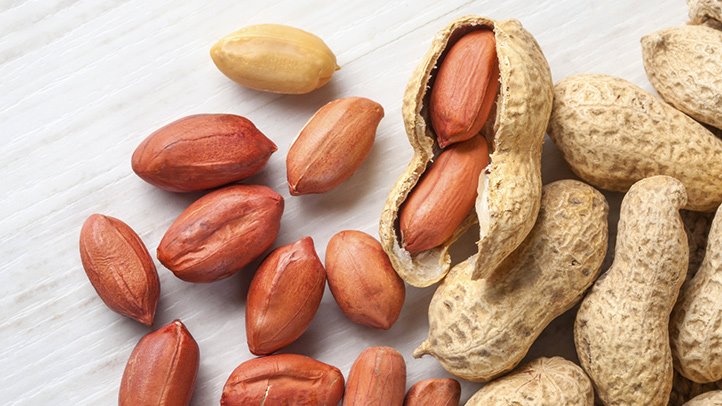Food allergies are on the rise amongst children. This is a common issue that lots of families struggle with. Peanut allergies are one of the most common food allergies out there. In fact, in the US the incidence of food allergies has increased 400% from 2007 until 2016. The incidence of peanut allergies has increased 450% in that 9 year span. This is an alarming increase in the percentages of food allergies and specifically peanut allergies. Researchers have been looking at ways to combat this alarming trend. For lots of children they tend to out grow their food allergies, but for some it is an issue they struggle with their entire life.
There was a research study that was done in the UK in 600 infants looking at the exposure to peanut protein powder and their incidence of peanut allergies by 5 years of age. These infants were labeled as "high risk" because they has eczema and issues with eggs. The cohort was between the ages of 4-11 months when they were started in this study and they were followed through 5 years of age. This group of 600 infants were divided into two groups: 1) avoid peanut protein completely and 2) were given 6g peanut protein powder weekly. The research findings showed that there was a reduction in the incidence of peanut allergies by 81% in the group that was exposed to peanut protein. Out of that group only 1.9% ended up with a peanut allergy compared with 13.7% of the children in the complete avoidance group. This is very interesting research because it definitely leads us towards the idea that early exposure could potentially help to decrease the incidence of peanut allergies.
Currently the AAP says that you can give peanut/peanut products to children when you start solid foods if there is no family history of peanut allergies. If there is a family history of food allergies then have a discussion with your pediatrician first. With careful monitoring from a pediatrician and a dermatologist, you can still give your child some peanut protein and that small dose, over time could help reduce the incidence of an allergy in the future. There is a product on the market called Hello Peanut. This product is very interesting because it could help serve as a tool for health professional to exposure children to a small amount of peanut protein and with close monitoring could help prevent peanut allergies. The way the product works is you start with the introduction packets and use it for 7 days. Each day you give one packet of the peanut protein and each day the amount of peanut protein in the packet increases in volume. It is kind of like a peanut challenge. If your child is able to tolerate the increasing dose over that week then you can move up to the maintenance packets. One issue with the research study that I mentioned above, is that there is no set length of time that is associated with how long you need to continue this exposure to peanut protein to prevent an allergic response. They are doing a follow up study to look at having those 5 year old, not consume peanuts for a year and see if they are exposed to peanuts after that year, if they elicit an allergic response.
This is all a neat idea to potentially decrease people's risk of developing a food allergy by giving them some exposure to this protein and letting their bodies adapt to that protein and not elicit an allergic response.
There was a great write up in the New York Times about the Hello Peanut product and how it can be used. Again, this is best used under the supervision of a health professional to ensure the safety of the child taking this product. If you child already has a diagnosed peanut allergy this is not a fix for that condition. There is no cure of peanut allergies.
The other really interesting thing about this research study is it prompted the FDA to look at this research and put forth a "Qualified health claim" that says that consuming foods with peanuts could potentially help prevent future allergies. This is the first time that the FDA has made a statement like this in regards to a food allergy. The whole claim is as follows "for most infants with severe eczema and/or egg allergy who are already eating solid foods, introducing foods containing ground peanuts between 4-10 months of age and continuing consumption may reduce the risk of developing peanut allergy by 5 years of age." Now there needs to be further research in this area and the FDA does knowledge that, but this is a huge step forward for food allergy research and could have a big impact on those of children and their lives in the future.
If you missed the FOX59 segment talking about this research study that aired in Indianapolis, click this link!


